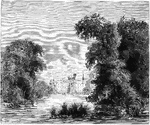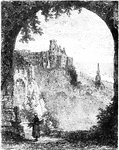Clipart tagged: ‘ancient castles’

Falkenstein Castle
Falkenstein Castle or Castrum Pfronten is a High Middle Ages castle ruin in the Bavarian Alps, near…

Castle of Hohenzollern
The ancestral home of Conrad of Hohenzollern and the third castle constructed on the site. The castle…

Castle Eisgrub
Eisgrub, now Lednice, a village in the Czech Republic. It contains a palace and the largest park in…

Entrance to Heidelberg Castle
A landmark of Heidelberg, the castle ruins are among the most important Renaissance structures north…

Interior of Heidelberg Castle
Interior view of Heidelberg Castle with elaborately carved doorway and part of a courtyard.

Heidelberg Castle Viewed from Terrace
View of the castle framed by an arch. A landmark of Heidelberg, the castle ruins are among the most…